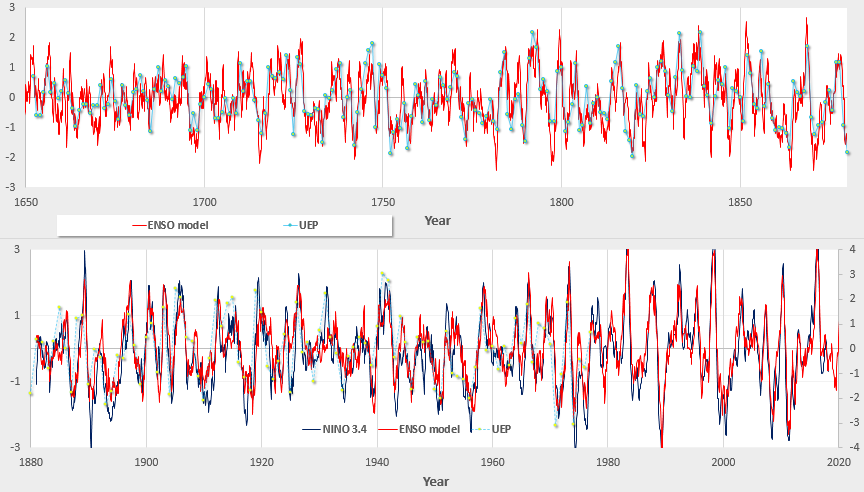As the ENSO model demonstrates a continuous fit from the proxy records starting in 1650 on through the instrumental records starting in 1880, it has become important to keep accurate tabs of the year length. The quality of the model agreement appears to be sensitive to the average year duration as well as position of the century leap years.
From 1880 to 2018, the actual number of tabulated days is 134,409 while the model uses 134,408.5, with an extra day inserted where the proxy and instrument data meet. So overall the number of days is 134,409.5. This is very close to the actual, and, further, it looks necessary for precision in terms of the long-period tidal analysis metrology. If even one lunar month is missed, the phase interference will destroy the correlation.
There are leap days at years 1600 and 2000 (centuries divided by 400) and missing leap days at 1700, 1800, and 1900. It appears that the inserted day essentially acts as a bridge from slightly longer average days close to 1650 and those of the present day. Otherwise the average year length is closer to the long term average of 365.2422 days.
1600, 366 days
1700, 365
1800, 365
1900, 365
2000, 366
This is a good problem to have as it substantiates the validity of the model. In other words, if the data wasn’t sensitive to the precise year duration it wouldn’t be a tidally influenced mechanism.
